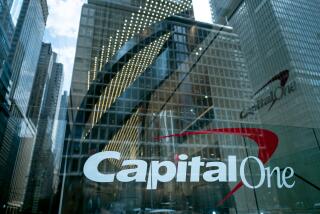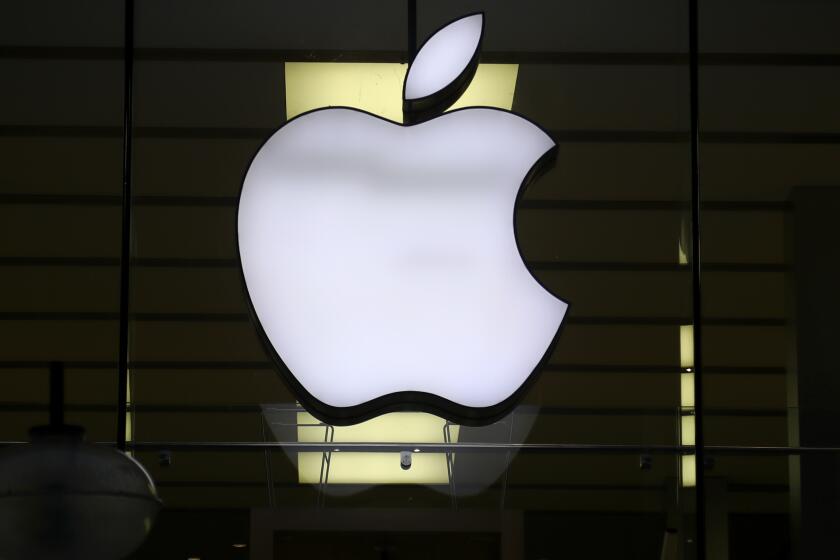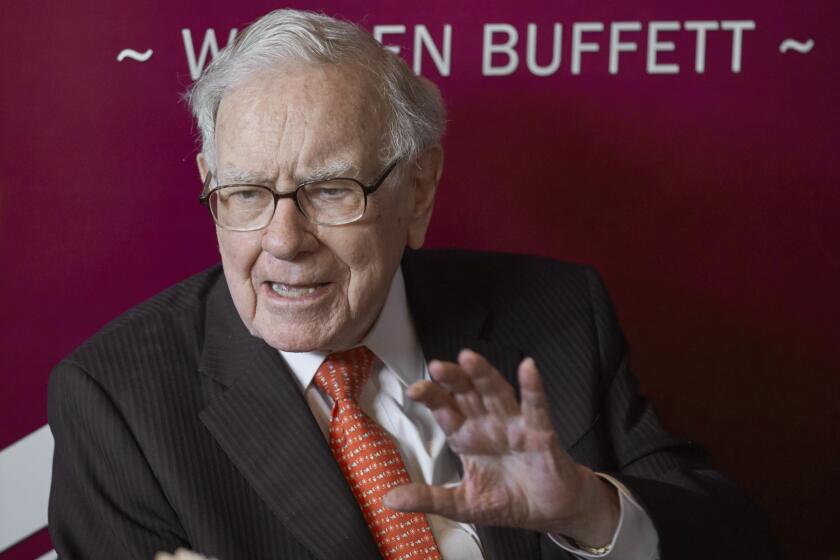Wells to Buy Barclays of California to Expand Its Presence in Southland
- Share via
Wells Fargo said Friday that it plans to buy Barclays Bank of California for $125 million cash in a transaction that will modestly expand the San Francisco bank’s presence in Southern California.
Barclays, a unit of Britain’s Barclays Bank, is California’s 17th-largest bank, with assets of $1.3 billion at the end of 1987. Its 50 branch offices are divided almost evenly between Northern and Southern California.
Wells Fargo is the state’s third-largest bank, with assets of $45 billion. It is strongest in Northern California, where most of its 443 branches are concentrated, and Wells has been trying to expand in Southern California.
The transaction is subject to regulatory approval and a definitive agreement. Wells said it expects to complete the acquisition late this spring.
The deal is the first large bank acquisition in California since the October stock market crash, and analysts said the price for Barclays was about 25% below what it might have been before the crash.
At that time, California banks were priced at roughly two times book value, which is basically an institution’s equity after liabilities are subtracted from assets. The price Wells is paying for Barclays is 1.6 times book value.
Analysts Surprised
“This would seem to set a lower benchmark price for California banks,” said Donald K. Crowley, an analyst in the San Francisco office of Keefe, Bruyette & Woods, an investment firm specializing in banks.
For several months, industry rumors have had Wells Fargo engaged in talks to acquire Union Bank of California, the state’s fifth-largest bank, with assets of $9.3 billion and an enviable business clientele in Los Angeles. Union’s owner, Britain’s Standard Chartered, has said the bank is for sale.
The deal with Barclays, which came as a surprise to most analysts, is not viewed as large enough to affect possible talks between Wells Fargo and Standard Chartered.
“There are enough rumors and indications floating around to suggest that their discussions are not dead and this deal will have no impact on any possible Union acquisition,” Crowley said.
The purchase of Barclays fits with Wells Fargo’s strategy in recent years of focusing on consumer and middle-market business in California, a business plan that has won praise from securities analysts.
“The addition of Barclays will help strengthen our retail presence in California,” Paul Hazen, president and chief operating officer of Wells Fargo, said.
“The acquisition is consistent with our strategy of focusing on the market we know best,” he added.
Expects Profit by 1989
Barclays of California has been marginally profitable in recent years, according to figures from Sheshunoff Ratings Service in Austin, Tex., Hazen said Wells expects Barclays to contribute to company earnings by 1989, which would be in line with Wells experience in the $1-billion acquisition of Crocker National Bank in 1986.
Although the Crocker deal nearly doubled its assets, analysts said Wells handled the merger efficiently and the expansion has contributed to the company’s 1987 earnings.
Part of the efficiency, however, involved firing 1,650 employees immediately after the acquisition. There was no word from either Wells or Barclays on what would happen to the 1,100 Barclays employees in California.
“As far as we are concerned, the bank is going to Wells intact and what happens after that is up to them,” said a spokesman for Barclays in New York, where it also maintains a retail bank.
BANKS AT A GLANCE WELLS FARGO BANK Wells Fargo Bank, founded in 1852, is California’s third-largest bank and the nation’s ninth-largest.
Branches 443
Assets $45 billion Employees 22,200 BARCLAYS Barclays Bank of California, founded in 1965, is California’s 17th-largest bank. It is a subsidiary of Barclays Bank PLC of Britain.
Branches 50
Assets $1.3 billion Employees 1,100
More to Read
Inside the business of entertainment
The Wide Shot brings you news, analysis and insights on everything from streaming wars to production — and what it all means for the future.
You may occasionally receive promotional content from the Los Angeles Times.










